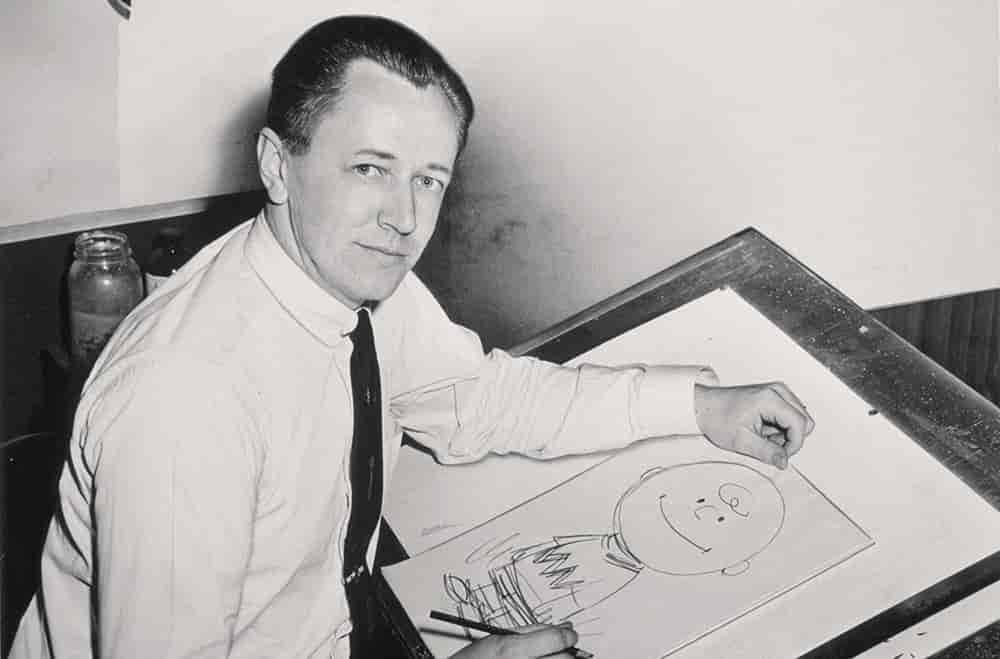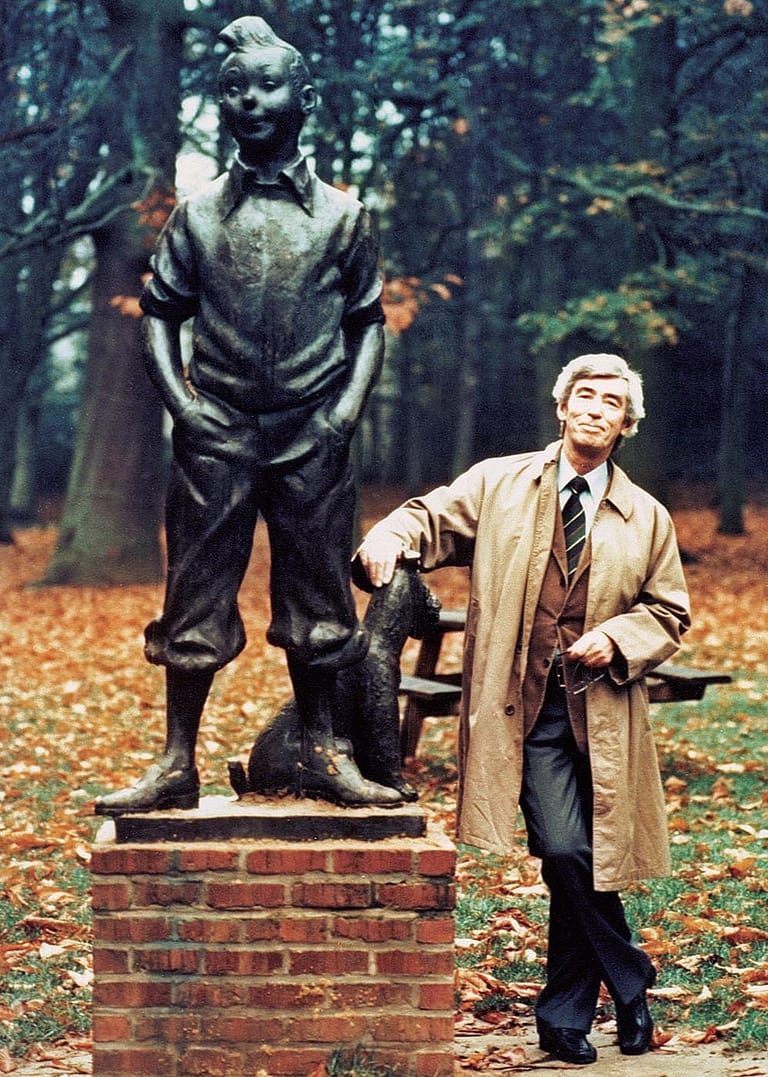Here is a look at the intriguing and often unexpected lives of famous cartoonists, the creative forces behind some of the most iconic characters and stories in the world of comics and animation. These artists, known for their imaginative universes and captivating storytelling, also have personal histories filled with quirky anecdotes and surprising facts.
Charles M. Schulz (Creator of “Peanuts”)

Charles Schulz, the genius behind “Peanuts,” had his quirks. Despite his success, he was known for his modest lifestyle. Schulz loved ice hockey so much that he built his own rink in Santa Rosa, California. He regularly played there and even sponsored a senior hockey team. Schulz’s daily lunch ritual for 40 years was a ham sandwich and milk, showcasing his love for simplicity and routine. Interestingly, Schulz despised the name “Peanuts” for his comic strip, a title imposed by the publishing syndicate, preferring “Li’l Folks.” His humble nature was evident in his interactions; he often answered fan mail personally and was known for his gentle, unassuming personality, much like the beloved characters in his comic strip.
Walt Disney (Co-Founder of The Walt Disney Company)

Walt Disney, the icon behind the Disney empire, had a secret apartment above Disneyland’s Fire Department on Main Street, U.S.A., where he would stay with his family. This hidden abode is still there today, with a light left on in the window in his memory. Disney was reputedly afraid of mice, an ironic twist given Mickey Mouse’s success. He was also a meticulous person, both in his work and personal habits, even inspecting his animators’ fingernails for cleanliness. Disney’s love for miniature objects was profound; he even had a fully operational mini steam train built in his backyard, which inspired the Disneyland Railroad. His contribution to animation was recognized uniquely with an Oscar featuring one full-sized and seven miniature statuettes for “Snow White and the Seven Dwarfs.”
Osamu Tezuka (Creator of “Astro Boy”)

Osamu Tezuka, the revered “God of Manga,” had an insatiable appetite for movies, particularly Disney films. His adoration for “Bambi” was so intense that he watched it over 80 times and made it a prerequisite for his studio staff to have seen the film. Tezuka’s dedication to his craft was extraordinary; he often worked on multiple projects simultaneously, reportedly sleeping only three hours a night. His work ethic and speed were legendary in the manga industry. Tezuka was also a qualified physician, though he never practiced medicine; instead, he used his medical knowledge to enrich his storytelling, particularly evident in “Black Jack,” a manga about a rogue surgeon.
Matt Groening (Creator of “The Simpsons”)

Matt Groening’s journey to fame is filled with personal touches. In “The Simpsons,” many characters are named after his own family members: parents Homer and Marge, and sisters Lisa and Maggie. “Bart” was a notable exception, an anagram for “brat.” Before his success with “The Simpsons,” Groening made ends meet by washing dishes in a nursing home. His break came with the comic strip “Life in Hell,” inspired by his disillusionment with life in Los Angeles. This strip caught the attention of James L. Brooks, leading to the creation of “The Simpsons.”
Hergé (Creator of “Tintin”)


Georges Remi, known as Hergé, began his illustrious career in a Catholic newspaper, where he first developed the character that would evolve into Tintin. He was a perfectionist, often redoing entire pages or strips to achieve the perfect narrative flow. His meticulous nature led him to establish Studios Hergé, dedicated to managing Tintin’s expanding universe, ensuring each detail was in line with his vision. Interestingly, Hergé’s drawing style, known as “Ligne Claire” (clear line), was revolutionary, emphasizing clean, expressive lines. Despite facing criticism during his career for some of the content in his early works, Hergé’s later life saw him addressing complex and mature themes, reflecting his personal growth and changing world views.
Bill Watterson (Creator of “Calvin and Hobbes”)


Bill Watterson is renowned not just for his brilliant comic strip “Calvin and Hobbes,” but also for his staunch stance against merchandising. Despite lucrative offers, Watterson refused to commercialize his characters, believing it would devalue the integrity and artistry of his work. He worked in near anonymity, avoiding public attention and rarely giving interviews. Watterson’s return to the public eye was as enigmatic as his departure: he anonymously contributed to a few “Pearls Before Swine” strips in 2014, only revealing his involvement after they were published.
Jim Davis (Creator of “Garfield“)

Jim Davis created “Garfield,” one of the most famous comic strips worldwide, inspired by the laziness and cynicism he saw in modern society and his childhood on a farm with 25 cats. Davis originally intended to focus on a bug character, but shifted to Garfield the cat, sensing more potential. He has a hand in every Garfield comic strip, despite the massive scale of its production and merchandising.
Hayao Miyazaki (Co-Founder of Studio Ghibli)


Renowned Japanese animator Hayao Miyazaki, co-founder of Studio Ghibli, is celebrated for his hand-drawn animations that bring imaginative worlds to life. Miyazaki’s work is distinguished by its focus on environmental themes, strong female protagonists, and the whimsy of childhood. Despite the rise of digital animation, he remained devoted to traditional methods, often drawing the storyboards himself. His repeated retirements and comebacks highlight his unwavering passion for storytelling and animation. Miyazaki’s films, including classics like “Spirited Away” and “My Neighbor Totoro,” have garnered international acclaim and a dedicated following.
Stan Lee (Co-Creator of Numerous Marvel Characters)

Stan Lee, the legendary writer, editor, and publisher at Marvel Comics is known for his charismatic personality and often made cameo appearances in Marvel films, endearing him to fans. A quirky fact about Lee is that he used alliteration in naming his characters (e.g., Peter Parker, Bruce Banner) because he had trouble remembering names. Lee’s signature sunglasses weren’t just a fashion statement; they became a necessity due to his poor vision.
Akira Toriyama (Creator of “Dragon Ball”)


Akira Toriyama, the celebrated creator of “Dragon Ball,” is known for his unique and vibrant storytelling in the world of manga. A quirky fact about Toriyama is his admitted aversion to drawing fight scenes, despite “Dragon Ball” being renowned for its epic battles. He much preferred crafting humorous and whimsical storylines, which is evident in the early “Dragon Ball” chapters. Toriyama’s working style was somewhat unconventional; he rarely planned his stories in advance, often developing plotlines spontaneously as he went along. This approach led to the creation of some of the series’ most iconic characters and plot twists on the spur of the moment.
Joe Shuster and Jerry Siegel (Creators of Superman)

Joe Shuster and Jerry Siegel, the creators of Superman, were high school friends who shared a passion for science fiction. Their creation, Superman, was initially rejected multiple times before finding success. Siegel and Shuster famously sold the rights to Superman to DC for just $13. The decision, made in the desperate hope of getting their character published, resulted in years of legal battles as Superman’s popularity soared, becoming an enduring symbol of heroism and hope.

